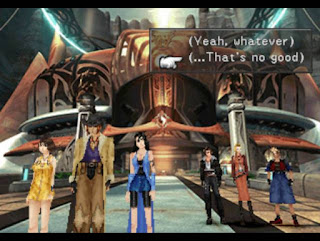The Behemoth - 2013 - X360/PC
BattleBlock Theater is the third game from developer The Behemoth whose previous games are Alien Homnid and Castle Crashers. It was designed by Dan Paladin (aka Synj) and Tom Fulp, both of Newgrounds.com fame and features the same art style and sense of humor you'd expect if you've played The Behemoth's previous games or are aware of their Newgrounds submissions. BattleBlock Theater is a cooperative 2D platformer that requires two players, connected either online or played locally to navigate through a series of levels that require players to be good platformers, puzzle solvers, and beat-em-up-ers.
The core gameplay in BattleBlock is mostly good, but what makes this game stand out is the humor. In a bizarre but funny opening cutscene, a narrator (voiced by Will Stamper who is also an active Newgrounds contributor) explains that several friends have been shipwrecked on an island full of cats, because this game's roots are in internet culture. The cats have captured the surviving members of the shipwreck, including Hatty Hattington, the former captain of the ship. The cats, now lead by Hatty Hattington who appears to be the victim of mind control, are forcing the survivors to participate in gladiatorial like challenges in a theater for the cats amusement, which is the very ridiculous context to the actions you're performing throughout the game. The narrator is the real star of BattleBlock Theater and will chime in frequently to comment on the actions you're performing during each stage. When an entire level is complete, you'll be treated to another cutscene featuring the narrator sometimes explaining what's happening in the plot, but mostly just being funny with this game's uniquely weird sense of humor.
Each stage requires both players to cooperate to navigate through a series of traps and enemies, all the while collecting green gems. When enough gems are collected, the stage exit is unlocked, allowing you to advance to the next one. But if you really want to be a completionist, you can try to search for all of the gems in each level. There are two difficulty settings on BattleBlock theater, "Normal" and "Insane", both of which I think are very flawed. On normal when a player dies, they instantly respawn next to their partner. There's pretty much no challenge with this difficulty and because there's practically no punishment or consequence for dying, players are free to be as careless as they want while progressing through each level. This may be fine for some, but I personally need a little more tension and challenge while playing, so I opted for "Insane" mode. In insane mode, when either player dies, both players are forced to restart the entire level. From the beginning. Now this is fine for the first few handfuls of levels, but when the number of enemies and difficulty of platforming starts to rise near the middle of the game, this mode starts to get really frustrating, especially when you pull off a difficult section perfectly, but your partner dies and both players are forced to start the entire level over. I think BattleBlock could have really benefited from some different difficulty settings here. Either a checkpoint system or a number of lives other than just one would have been very, very welcome. This is a relatively simple thing that I think unfortunately really hamstrings BattleBlock Theater
BattleBlock Theater Video Review
Summary
Overall though, this is still a pretty solid game. It's another good couch co-op game, a type of game which I personally love and have been enjoying its recent resurgence. There are also several competitive mini games included here, most of which I actually didn't mess around with much, but they look like they could be fun if you're into competing rather than cooperating. There's also a built in level editor if you want to make your own sinister stages for your friends to navigate through. All in all BattleBlock Theater is a good game to share with friends, and features the most absurdly weird, yet still funny sense of humor you'll find in a video game































